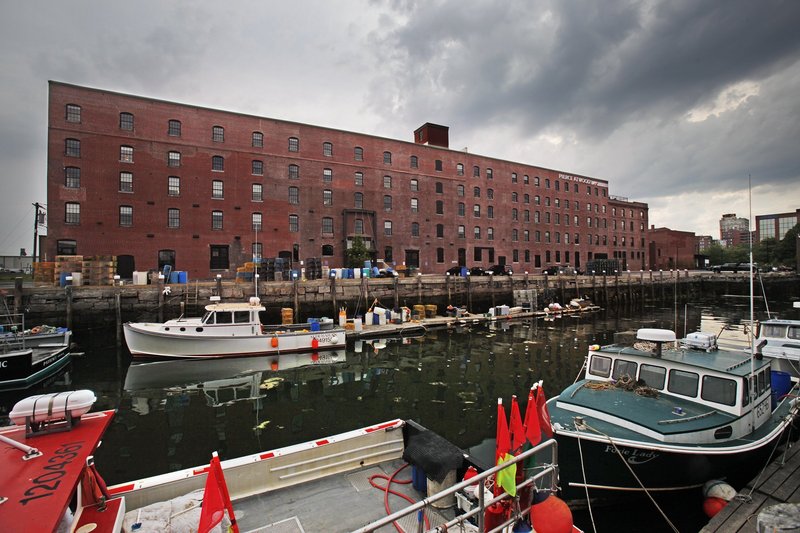Two events this month show the tensions facing Portland’s working waterfront.
The first was good news: the announcement that Shucks Maine Lobster was leasing 19,000 square feet of space at the Maine State Pier for lobster processing. The expanding business is expected to invest more than $1 million on renovations and equipment and bring nine full-time jobs and 60 part-time ones to the waterfront. Along with Ready Seafood, a lobster shipping company, which will also lease space on the pier, Portland will build on its role as a hub for the lobster fishery.
The second development was not so good. The owners of the old Cumberland Cold Storage building on Commercial Street, now the headquarters of the Pierce Atwood law firm, announced that they have not been able to find marine tenants to lease space that is reserved for them by zoning. The building’s owners got permission from the Planning Board to rent the space to other kinds of businesses.
Coming so closely together, the two developments illustrate the tough choices the city will have to make if Portland is going to preserve its working waterfront. There is still demand for space near the water for seafood processing, as the Shucks deal shows. But there may not be enough to justify the zoning restrictions last revised in 2010. As this conversation moves forward, the city should not forget its commitment to a robust working waterfront. This is a vital part of Portland’s heritage, and the jobs these businesses provide won’t come back if they are forced out. Preservation may involve public investment that promotes infrastructure upgrades that rents alone can’t support.
That said, at this point it’s hard to know how much space should be reserved as working waterfront. It’s clear that the groundfish industry has shrunk to 10 percent of its size of 25 years ago, although Portland remains the hub for landing and selling groundfish in Maine. The lobster fishery is not shrinking, however, and although there are more places to land lobsters, Portland plays an important role.
And it is not yet clear what kind of marine business activity will be generated by Portland’s role as the U.S. port for Einskip, the Icelandic shipping company, or if there is a revival of ferry service to Canada, which may also involve moving freight.
So, while it’s clear that the Portland waterfront is in a time of transition, it’s less clear which way things are moving. Planners and property owners should continue to move with caution, recognizing the value of a working waterfront.
Send questions/comments to the editors.



Success. Please wait for the page to reload. If the page does not reload within 5 seconds, please refresh the page.
Enter your email and password to access comments.
Hi, to comment on stories you must . This profile is in addition to your subscription and website login.
Already have a commenting profile? .
Invalid username/password.
Please check your email to confirm and complete your registration.
Only subscribers are eligible to post comments. Please subscribe or login first for digital access. Here’s why.
Use the form below to reset your password. When you've submitted your account email, we will send an email with a reset code.